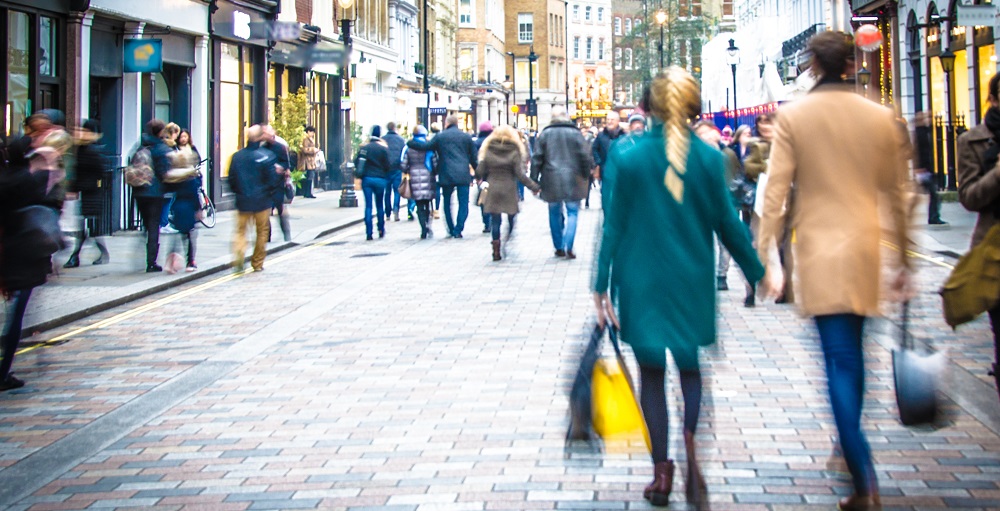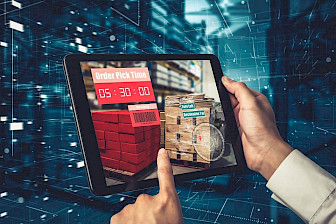2021 Retail, the meaning of change

To preserve the relationship with the customer, retail will have to play on many fields and continuously over time, not just during the time of sale.

Despite the complexity of international events and the limited nature of the first surveys, 2021 Retail has however already given valuable pointers for the coming years agenda. Beyond general or specific contingencies, such as the pandemic and the discontinuity of the global supply chain, the evolution and complexity of the customer journey make the convergence of distribution and areas of the market that until now were only complementary a priority.
Thinking of understanding and circumscribing 2021 retail in a few essential steps is unreasonable. In order to identify the true meaning of the change in what has been, it is paradoxically necessary to look at what will be.
Since 2020, the pandemic has driven huge numbers of consumers towards digital solutions, and the needs and opportunities of these channels have been a formidable driver of change. However, we need to distinguish between simple remedies and real trends, and the usual schematic view of various subsets of the industry can be misleading.
Phygital is no longer enough
What is important now is no longer convincing latecomers of the convergence between shelves, checkouts, storefronts, restaurant tables, web and smartphones, but awareness of the growing and reciprocal ‘field invasions’ beyond the usual perimeters, made possible by technology and decisive in the creation of new forms of distribution.
Phygital is by now only a partial key to understanding the trends underway. It suffices to cite the example of TikTok, which just two weeks ago announced for 2022 the availability in about 300 U.S. locations of the food delivery service made popular by the viral videos of its platform.
In October, what is more, Walmart launched the “biggest online retail destination for Netflix consumer products”, starting, in all likelihood, the revision of the concept of merchandising commonly understood up to now.
A few months before, i.e. in August, another American supermarket giant, Target, teamed up with the cosmetics chain Ulta Beauty in a partnership that will involve 800 stores, revising the format itself in a much more advanced logic of the pop-up store, sharing online pickup, drive-up and same-day delivery services
2021, in short, was not the transition to an illusory ‘new normal’ after the 2020 upheavals. Returning all industry priorities back to the sole integration of physical and digital, however, risks becoming as commonplace as the ‘centrality of the customer’ much trumpeted for at least a decade, and despite what has actually been done. Rather, it has further emphasized the need to trace new paths, where certainty and stability over time are an illusory claim.
Digital commerce, the measures of change
At the start of 2021, it was natural to wonder how much of the widespread and hasty reliance on online commerce induced by the pandemic in 2020 would be confirmed. The most correct measure of change is probably not only and not so much the volumes as the impact on global retail.
Estimates by Osservatori.net for 2021 quantify the B2C eCommerce penetration rate as growing substantially everywhere. China continues to reassert its leadership in volume ($1,460 billion) and increases its share from 25 to 28%; the United States ($747 billion in value), goes from 20% to 22%; Europe, as a whole, increases by one percentage point, from 15% to 16%; Italy goes from 9% to 10%, and the United Kingdom confirms once again its primacy and sees its penetration rate rise to 31% of total consumption.
According to ResearchAndMarkets.com estimates, the social commerce market in the United States has skyrocketed to more than $50 billion in 2021, which, however, represents less than 7% of world business. To give an idea of the Chinese primacy, which is expected to reach $1.5 trillion in 2026, with a CAGR of 34% in the five-year period considered, the value is not much lower than that expected for the whole of Europe in the same period. Furthermore, the live streaming sector is estimated to reach about $70 billion for 2021 and to grow to over $200 billion in the coming years.
Supply chain and delivery
Over the past twelve months, retail has shared the concerns of many industrial sectors about global supply chain difficulties, of which the microchips shortage is only the most prominent aspect. These are the effect of a complicated set of causes involving raw materials, production, transportation, labour, corporate trade policies and government decisions.
The diffusion of the bring-it-to-me economy, a digital evolution (or involution?) that has been underway for a long time and that has gained ground in the pandemic, in 2021 has become consolidated practice for a broad consumer population who live and work from home. The options of home delivery and pickup at stores or third-party locations are now one of the decisive competitive factors in global retail, and will continue to be so for a long time to come. The huge increase in LTL (less-than-truckload) carriers, especially for last mile deliveries of small packages, is emblematic of this.
And for several distribution sectors, with fashion in the lead, the reverse logistics of returning goods to distributors or producers for resale or disposal is now of strategic importance.
Sustainability
The issue of deliveries, even more so in 2021, is an excellent starting point for dealing with sustainability, evolved from a simple ethical option (or more often advertising) to a mode of relationship with consumers, for the purpose and values that guide a brand or organization. Only as regards the food cart, the value in Italy of green products has reached €10 billion.
Almost every step in the value chain can be measured in terms of environmental impact, and the use of technology is one of the sure ways to achieving sustainability goals and reducing energy costs. For retailers, the adoption of predictive forecasting models is proving to be an effective means to make the most appropriate sourcing and stock management decisions, solve inaccurate demand and inventory planning, and reduce waste of packaging and products in excess.
In Italy
For large-scale distribution, according to Nielsen data, at the end of the year the drop in the cumulative figure from January to December stood at 0.74% compared to 2020, a year, however, of exceptional results, and the downsizing of large retail spaces continues inversely proportional to discount stores. In the first closing observations, 2021 seems to have been favourable to the growth of proximity retailing, for which supermarkets and small sales areas are relevant.
E-grocery is growing, but remains secondary in terms of overall food sales: in Coop Italia’s forecasts it will maintain a share of less than 3%. In the immediate future, the greatest concern for large-scale distribution is the evolution of prices: in the first half of 2021 the reduction of general price level of food products was 0.7%, but the increase in the prices of raw materials and the suppliers price lists foretells a difficult 2022 for both distribution and its customers.
Fashion, after the major downturn of 2020, recorded a 19% like-for-like sales growth in the first eight months. It is not possible to assume a short-term return to the volumes and profitability of 2019, which are still far away, even though the recovery in exports bodes well for the sector.
Catering, after the annus horribilis, experienced a recovery in consumption in the spring, when 80% of Italians returned to eating out.
The worsening induced by the new measures against the spread of COVID-19 is however combined with the increase in food prices –close to 10% according to trade associations– and energy. Current list prices and the drop in out-of-home traffic seem to anticipate new difficulties for the sector.
2022 and beyond
The need for adequate responses to new consumer expectations after the health emergency is beyond question. This cannot however be dismissed with a generic reference to technology, which remains the best and indispensable tool available for those who want to stay and grow in the market. It will be crucial to have a clear perception of the impact on the brand, on the distribution system, on the store and on the single point of contact with the customer.
If what makes the difference is the relationship with those who buy, with the greatest possible personalization, only with digital innovation is it possible to find new balances and greater strength to compete, with everything that is needed to host an experience and create new organizational and commercial models, rather than simply managing demand.
In order to preserve the relationship with the customer that already exists and that which will be, retail will have to play simultaneously on many fields up to now quite distinct, and continuously over time and not just at the time of sale, up to the point of building an ecosystem of what it has always been, but augmented by data, technology, marketing, social media, creativity and communication. A complex but unavoidable path.
(edited by Michele Caprini, Retex Group)






